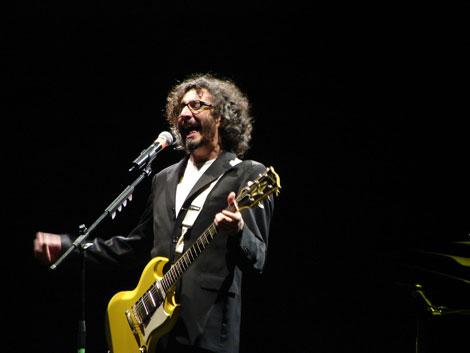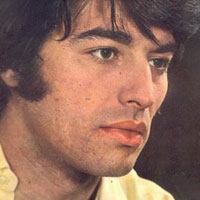
Fito Páez is the youngest of the four artists that we are profiling in this two-part article on legends of argentine music. He was born in 1963, making him a spring chicken of just 47 in 2010.
Like Charly García, Fito Páez was an early starter, forming his first band at 13 and beginning to play live just a year later. He gained notoriety as a songwriter with his 1984 album Del ’63 and as a result released another album in 1985 and yet another in 1986 in partnership with Luis Alberto Spinetta.
Fito Páez’s most interesting record is his 1987 album (yes, 1984-87 was a busy four years!) Ciudad de Pobres Corazones. It’s a dark, angry and heavily political album that was driven by the event of the assassination of his aunt and grandmother in Rosario. Despite the anger that’s evident in every line, it shows the depths of Páez’s talent as a lyricist.

A young Fito
One of the most recent albums penned by Fito Páez was El Mundo Cabe en una Canción, which won the Latin Grammy Award for Best Rock Solo Vocal Album at the Latin Grammy Awards in 2007.
Joining the ranks of legendary deceased Argentine musicians in January 2010 was “The Argentine Elvis,” Sandro.
Sandro was born Roberto Sanchez (generic name, no wonder he changed it), and began his musical career in the 1960s as an unashamed Elvis clone, complete with a dark mane of hair and pelvis thrusts. However, he didn’t become as fat or dead as Elvis (he was 64 when he died), and so in time he established himself as a credible and respected crooner and ballad singer.

The Argentine Elvis: Sandro
Two of Sandro’s biggest hits were Asi (“Like This”) and Dame Fuego (“Give Me Fire”). Track them down if you want to know what Sandro was all about, and/or get an Argentinean woman in the mood for love (or both, why limit yourself). Again like Elvis, Sandro recorded dozens of albums over his career and starred in a total of 16 films (I haven’t seen any of them, but I bet they’re really cheesy).
In 2005 Sandro was presented with a career achievement award at the Latin Grammys.
Finally, it remains only to say that not only was Sandro a legend of Argentine music, he also continues to be the answer to many a pub-quiz question, as he was the first Latin American artist to sing at Madison Square Garden in New York (in the 1970s).

One Comment on ““Legends of Argentine Music, Part Two””
Please, don’y mention “Latin” Grammy. They should be named “Mexican” Grammy.
…and the utter legend: Los Redonditos.